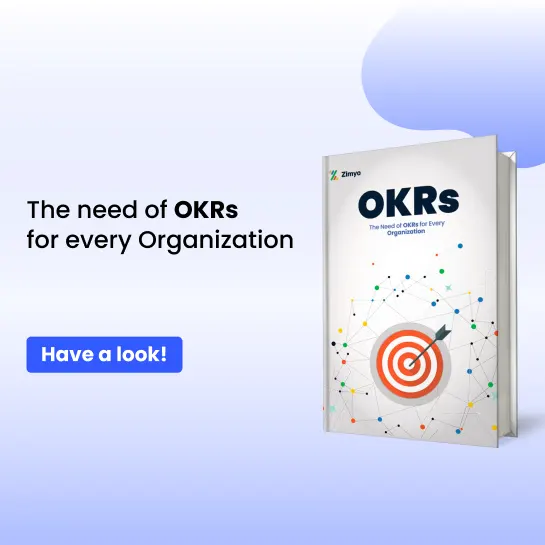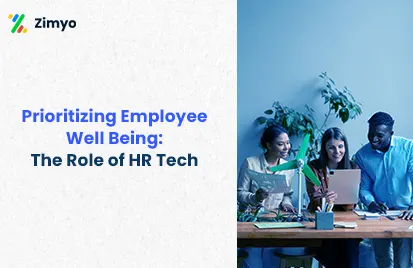Workplace flexibility is a method of reacting to changing expectations and circumstances. Giving your employees the option for flexible working is a remarkable way in keeping them happy, but it is more than an incentive. Flexible working has the potential to increase employee engagement and productivity, reduce absenteeism, and boosts profits.
Offering flexibility should be a top concern when recruiting candidates and assessing the current employees’ overall happiness. Businesses are more likely to lose out in the war for talent if they are unwilling to be flexible.
What is Workplace Flexibility?
Flexibility in the workplace emphasises on the ability and willingness to adapt to change, especially regarding when and how to work.
Workplace flexibility is linked with where and when employees work, covering flexibility of tasks assigned. This means customising and redefining a person’s job description to capitalise on their strengths and ability to help you address your business requirements.
From the employer’s perspective, workplace flexibility means giving the employees the autonomy and freedom to get their work done without making a rigid rule to enforce them. This autonomy can apply to various facets of an employee, such as providing workers with the opportunity to own their projects.
Workplace flexibility allows an employee to work in hours that vary from the standard company stop and start time. In the early days, workplace flexibility meant that an employee might work from 7 a.m. to 4 p.m. daily to give the employee an extra hour in the morning in change for losing an hour in the noon. Having a flexible workplace guarantees that employees can adjust their work schedules as they see fit to meet their requirements to live everyday life.
For your company to revamp its policy on flexible working, you must create a culture that supports this approach to work.
The workplace flexibility benefits are numerous; providing workers with flexibility and choice leads to more productive, happier employees, and better mental and physical wellness. However, workplace flexibility proves to be fruitful only when you know what your company requires, how to administer it and how to provide the proper support through training.
There are two types of workplace flexibility:
- Informal workplace flexibility policies refer to the unauthorised policies and are presented flexibly, primarily by someone in the higher ranks.
- Formal workplace flexibility policies: Traditional workplace flexibility is a policy that is officially sanctioned as human resource policies. These policies direct and guides how workplace flexibility is done in a specific workplace.
The advancement of technology has helped developed effective and efficient communication. Being in one specific location to work has become irrelevant. People in different continents and countries can collaborate and communicate as efficiently as those in the same environment.
Techniques to Support Workplace Flexibility
Offering flexible options at the workplace is no longer a perk or an option. With the pandemic and remote work coming to the fore, it has become even more essential than it ever was. Here are some ways in which you can support workplace flexibility.
-
Ensure that your employees are comfortable
While employees can choose to work from a place outside of a specific firm’s workplace, some employees do not get this option because of their work nature. Others will not work for their reasons, which does not mean that things cannot be done to offer flexibility for them within that specific environment.
For example, allowing employees to personalise their workspaces is also workplace flexibility; this will grant them more control over how they work, resulting in them being more productive. Allowing employees to make decisions and personalise their workspace has been shown to increase employee productivity.
You can also provide the below options for your employees to make your workplace flexible:
Adjustable furniture: Sitting down to work is quite detrimental to health but standing throughout working hours may be a little overwhelming for some. A solution to this is to give the employees adjustable furniture such as adjustable standing desks, making them work in whichever way they want.
Open workplaces: One way to transform your workplace flexibly is open workspaces. That includes having various places within the same workplace where employees can get things done. For instance, you can set aside locations within the workplace where employees can have peaceful communal spaces in the office environment to interact and exchange ideas. These small changes will make them do wonders to provide them choices as to how they want to work.
Allow employees to own memorabilia: Giving the employees the authority to hold belongings and customise the workspace has been fruitful in amplifying employee productivity. It can be anything, for example, a potted plant, a coffee mug, or a family photo.
-
Remote Working
As mentioned, workplace flexibility involves employees being able to decide where they want to work from, till what hours they want to work, and how they will work. This criterion allows your employees to work from their home or even if it can be done full time.
This is not only advantageous to the employee but also the employer. There will be comfortability and convenience for the employee, while the employer will save on real estate costs, among other things. Allowing your workers to work from their homes will help them to decide when to work, offering them the flexibility they desire.
-
Workplace Independence
One more thing you should consider implementing in your workplace to allow for more flexibility in autonomy. This does not mean that your workers are not answerable for their actions; it only means that they have some control and independence over how they go about completing daily activities. Micromanaging employees will only result in dissatisfaction which will affect their productivity. Give your employees a break, trust them to manage themselves, and give them the chance to prove you wrong or right.
Not being able to control when you work and how you work will only cause frustration and deep-seated resentment on the employee part, which is not suitable for your employee’s health, let it be physical or mental.
Micromanaging will not make your employees feel confident as it paints the picture that the employee cannot get things done without direction. You will notice an enhancement in productivity when giving them independence and free reign on how to do their work.
-
Engagement and Communication
It takes extra effort and a fair degree of planning to keep people who work remotely or part-time in touch with everything. Also, face-to-face meetings can sometimes be difficult to arrange or more effort for a manager to attend and the value of informal day-to-day communication.
Managers rise to many challenges to grow to these, too, considering they look at the benefits we gave.
If an employee asks for working hours, keep a meeting to authenticate their requirements. Explain the methods by which the employee will still be to provide their work effectively. A vital element of this discussion is to ensure both your employee’s expectations and yours are clarified in detail and make sure all objectives are crystal clear, measurable, and achievable.
Guide your employees on the path of self-realisation about their capabilities. If they overextend themselves, they are more likely to be late, underperforming, or absent. If you allow workers to work from home, it is worth noting that accurate technology needs to be in place to do their jobs.
-
Mutual Trust
The desire for flexible hours is on the rise, with more than 67% of the employees wishing they were flexible working as an option.
Employment law states that all workers have the legal right to request flexible working after being in an industry for 25 weeks or longer, but many think it may jeopardise their position.
The fundamental point here is trust. Your company will need to trust that its employees will handle their time in a way that does not compromise productivity. On the other hand, your workers will need to trust that this arrangement will be respected and will not compromise their prospects or position within the company.
-
Quality over Quantity
Besides family commitments and juggling work, there is a various reason why an employee might go for flexible working hours: from achieving a master’s degree to starting their own business to practicing for competing in the Olympics.
But an employee’s inability to commit to standard workplace hours does not indicate an incapacity for them to work, nor does it suggest a lack of career ambition.
From a standard point of view, the most hard-working and committed employees are the ones that arrive first and leave last – but hours spent in the workplace are by no means a reflection of remarkable performance. For example, one employee can achieve the same results as another, but in half the time.
Final Thoughts
The COVID-19 pandemic has changed and is still changing the world; it is entirely feasible that the pandemic is a tripping point for flexible work.
Employees and families have learned that a flexible workplace can help them balance work and home life equally. Employees have found that working from home comprises its benefits, including the ability to be productive. Employers have learned that allowing flexible work conditions keeps their businesses going in the face of an ongoing emergency.
Flexible schedules benefit both the employee and employer in various ways. And though it may signify a massive shift in how you have been doing things before, it is still uncertain what the future beholds in terms of working conditions. Espousing flexible scheduling now will help you succeed in the future.









